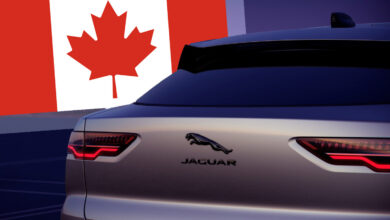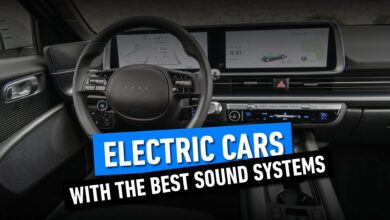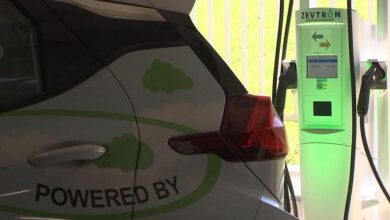Toyota, Subaru, and Mazda Just Sent a Massive Warning to Tesla, Rivian, and Nio Investors

Toyota and other Japanese automakers are developing new low or no-carbon combustion engines in a warning to pure-play battery EV-makers.
Some investors perceive the electric vehicle revolution as an inevitability and believe that internal combustion engines will eventually go the way of the Dodo bird. That’s why many EV stocks trade at higher valuations than traditional carmakers.
But what if they’re wrong?
After several years of torrid growth, the electric vehicle industry saw a big slowdown over the past year, prompting questions about whether EVs can really catch on beyond their early adopters.
To make matters worse, Japanese auto companies Toyota (TM 1.56%), Subaru (FUJHY 0.93%), and Mazda (MZDA.Y 2.94%) made an announcement last week that could make EV-makers’ tough year that much more difficult.
A new kind of combustion engine
On Tuesday, May 28, Toyota, Subaru, and Mazda announced a lineup of innovative new combustion engines that can be used either in a stand-alone or hybrid form in conjunction with a battery.
The new engines will be combustion engines but also compatible with alternative fuels such as e-fuel (synthetic fuel), biofuels, and liquid hydrogen. Liquid hydrogen, provided the hydrogen is made from electrolysis, emits zero carbon dioxide (CO2). And while both e-fuel and biofuels do emit some carbon dioxide, they’re considered “carbon neutral.” This is because e-fuels are made from captured CO2 from the atmosphere, which is then combined with hydrogen to produce synthetic fuel. Meanwhile, the justification for biofuels is that the plant biomass grown to make biofuels takes CO2 out of the atmosphere during photosynthesis. That may be a bit of a stretch, as all plants use photosynthesis, so at least for biofuels, there would have to be enough new plants put in the ground to offset the biofuel combustion.
Still, a future hybrid vehicle that combines a battery with one of these no-carbon or “carbon-neutral” fuels could be a killer for mainstream EV adoption.
After all, the recent year has exposed some glaring holes in the “EV revolution” thesis. For one, EVs, in general, tend to cost more than internal combustion vehicles or hybrids, scaring off budget-constrained consumers amid higher interest rates. Second, there have been fears that the widespread adoption of EVs, combined with AI data centers, could strain the electric grid to an unsustainable degree. Furthermore, if the electricity used to charge up EVs comes from either a coal or natural gas-fired power plant, that EV really isn’t doing anything positive for CO2 emissions anyway.
Finally, many consumers have “range anxiety,” as they worry about an EV running out of charge without having an accessible working charger close by. Compounding this is today’s public charging stations, which have proven disappointingly unreliable. A 2022 study showed that about 23% of public “fast chargers” in San Francisco didn’t work. And fully charging an electric vehicle takes at least two hours today, even for the fastest-charging, smallest-battery EVs.
Image source: Getty Images.
Toyota has been ahead of the game
Years ago, Toyota’s former CEO, Akio Toyoda, rejected the assertion that EVs would quickly overtake ICE vehicles, citing many of the affordability and lifestyle issues we’re seeing now. Instead, he pushed Toyota to take a diversified approach, which seems to have been vindicated.
Last quarter, Toyota posted an impressive 21.4% revenue growth on the back of a shocking 138.6% growth in Prius hybrid sales. In another shocking data point, hybrid vehicle registrations outpaced electric vehicle registrations in Europe in February, reversing a long trend in one of the most EV-friendly places on earth. Meanwhile, Tesla (TSLA -0.40%), the most mature EV brand, saw a 13% decline in vehicle sales in the first quarter.
The surge in hybrid sales shows the consumer does want a low-carbon and fuel-efficient vehicle, but might not be ready to make the leap to a full battery-powered EV just yet. This is especially true for one-car households that need a vehicle for both short and long drives.
Today’s hybrids do burn fossil fuels, even if they are more efficient. But with Japanese automakers innovating around new combustion engines that can use low or carbon-neutral fuels in combination with a battery, the competitive pressure on pure-play EV players like Tesla, Rivian (RIVN -0.46%), or Chinese players like Nio (NIO -0.18%) could become intense.
Winners and losers
It’s pretty obvious who the losers would be if these new engines take off: those vehicle brands that have gone all-in on electric vehicles without any backup plan. And the largest and most expensive EV stock is Tesla. Of course, Tesla has the engineering talent to develop a hybrid vehicle if it chooses to, but given that it has resisted up until this point, it’s an open question as to whether the company would adapt.
The winners? Not only Toyota and the other companies listed here, but also companies exposed to the burgeoning hydrogen ecosystem. These include hydrogen pure play Plug Power, as well as hydrogen production and transportation equipment provider Chart Industries, among others.
So for those looking to invest in the next generation of automotive stocks, it will be critically important to stay on top of these new alternative fuel combustion engines, and how the battery EV industry adapts — or doesn’t.



